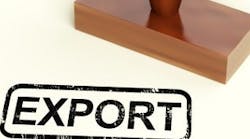Jim Montague is the executive editor for Control. Email him at [email protected].
Maybe it's the two big oceans. Maybe it's the persistent, societal memories of long-ago journeys of emigration and assimilation that make many folks in the U.S. reluctant to get involved with Europe and the larger world now. Sure, we helped out with a couple of world wars, but American isolationism remains our first reflex. Sadly, this prejudice continues to hold us back on many political, economic and technical fronts, including machine safety and reaching out to participate in worldwide markets.
SEE ALSO: Machine Builders, Manufacturers Achieve Global Market Success
However, everything I've learned in researching global machine stories over several years indicates that users in international markets are accessible with a little extra effort, and that such efforts can payback huge benefits. I think some of these hurdles and opportunities are best described by John Kowal, business development director at B&R Industrial Automation and global marketing committee member at PMMI--The Association for Packaging and Processing Technologies, who shared some thoughts about this month's cover article on global machine building.
"There are still many impediments to global machine design and export sales as witnessed by the relatively small portion of exports produced by domestic packaging machine builders," Kowal says. "For example, there's the 'soft metric' machine. This is the 12-oz/355-ml can concept applied to machinery, in which metric fasteners might be used, but dimensions remain overall in imperial units, even if expressed in metric. This may or may not be acceptable, but the more components such as mechanical drivetrains are English, the harder it is to find replacements outside the U.S."
Kowal reports industrial design is a real, if undocumented, influence on machinery purchasing. "With notable exceptions, European machine builders tend to put more effort into fit and finish, clean lines, stainless steel and aluminum extrusion, and HMI user experience," he explains. "North American builders, again with notable exceptions, tend toward heft, exposed weldments, mild steel with paint or powder coating, and a more basic approach to HMI. The same contrast applies to controllers, HMI screen dimensions and levels of mechatronic design.
"For example, most domestic tray formers use a VFD and lots of chain to meet price points and offline operational practices in North America. European OEMs tend toward multi-axis servo tray and retail-ready display case formers, integrated into the packaging process, and designed for recipe-based changeovers. European machine builders even offer extremely flexible case erectors for distribution centers that can make a different case dimension in each cycle from a single-sized sheet of corrugated."
Consequently, Kowal adds it's difficult to export the North American mindset to Europe or other markets now accustomed to the European machine approach over the past two decades. "And, European packaging machine builders have been much more aggressive in exporting than U.S. builders, even in markets as close as Mexico," he says. "This is where a world approach to machine design comes in. There are plenty of multinational, North American consumer packaged goods (CPG) manufacturers, which buy both European and North American machinery, but are increasingly sourcing European or local OEMs outside the U.S. It's hard to notice the shift because the U.S. domestic market is so large, but it's not growing compared to the BRICs [Brazil, Russia, India and China]."
And yet, Kowal adds, it's entirely possible for a North American OEM to sell a global design in the U.S. to multinationals, and follow the customer into export markets. "After years promoting machinery export, I've concluded this is the primary way for smaller OEMs to participate and grow with minimal risk. But, this means presenting a value proposition to corporate strategists, not isolated plants," he says. "Export requires a strategy. The impressive thing about European OEMs is that even small companies aggressively export. European companies have no choice but to export if they want to get beyond $5-10 million in sales.
"I know it's difficult for smaller North American OEMs to make an open-ended investment to establish sales and service ahead of actual sales. This is why following the customer makes sense to mitigate that risk. It might cost you to be on the ground in China or Brazil, but it's a cost of supporting existing sales, instead of taking a deep breath and throwing money down a hole."
Kowal adds that PMMI is great at advising member companies how to export, find sales representation, deal with financial requirements while tying up the least amount of capital, how to find qualified technical support services, as well as economical ways to exhibit at several foreign tradeshows, and what various countries look like in terms of market potential.






